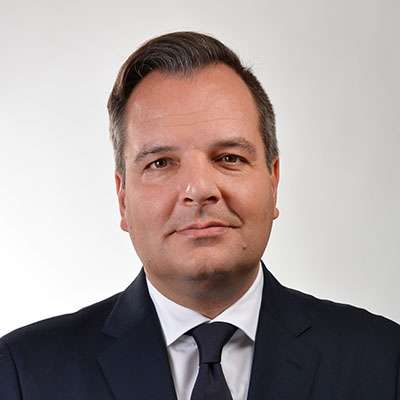
EFFICIENCY INCREASE AND COST REDUCTION
All current economic forecasts and economic signs point in the direction of an economic slowdown. Brexit and the customs and foreign trade disputes between the US and China and the EU are also contributing to the manufacturing industry facing the coming quarters with a high degree of uncertainty and unanswered questions.
TMG efficiency cockpit
REDUCE COSTS, INCREASE EFFICIENCY, COUNTERACT ECONOMIC DOWNTURN!
In times like these, it is important to identify the right and, above all, short-term levers for increasing efficiency and reducing costs and to implement them as quickly as possible.
We have summarized the relevant levers for you in a TMG efficiency cockpit. Our TMG Efficiency Cockpit offers our customers the opportunity to configure individual programs and establish targeted cost reduction programs in-house. This is accompanied by standardized tracking of measures to improve implementation. We would be happy to present the TMG efficiency cockpit listed below in a non-binding personal meeting.
Overview of the TMG cockpit
Reduce inventories quickly and effectively
Portfolio optimization
Despite the ongoing low interest rate policy, inventories are once again increasingly the focus of entrepreneurial activity. On the one hand, the noticeable economic downturn and the uncertain forecasts make it necessary to safeguard the earnings situation and thus optimize working capital. On the other hand, increased product and variant diversity, growing supply chain complexity, inflexible production facilities and a focus on increasing output have driven up inventories. In many manufacturing companies, the inventory level is therefore far too high across the entire chain.
STOCKS ARE BACK IN FOCUS!
We would like to give you suggestions and ideas on how you can reduce stocks quickly and effectively and answer the following questions:
- What causes the high stocks?
- What are the correct or optimum stock levels and turn rates?
- How high is the stock reduction potential?
- What are the most effective levers for reducing inventory?
- What immediate measures can be taken to achieve short-term effects?
Optimal capacity utilization
productivity increase
USE PRODUCTIVITY LEVERS AND INCREASE PROFITABILITY!
After years of constant upturn and growth, some industries are currently struggling with a significant decline in volume. As a result, we encounter the following situation in many plants:
- Due to the decrease in volume, the optimum operating point of production is left behind
- As a result, productivity decreases and production/unit costs increase significantly, which has a negative impact on the company’s earnings.
- At the same time, the real OEE of operating resources is often well below 60-70% with many inefficiencies in operational processing
While the primary aim in recent years has been to continuously increase the production output of the plants, the challenge now is to provide the reduced production volume as efficiently as possible with minimal use of resources and optimal capacity utilization.
AI-supported procurement
Digital Sourcing
THE ECONOMY IS FLATTENING OUT – SELLERS’ MARKETS ARE TURNING BACK INTO BUYERS’ MARKETS!
When the economic situation takes a turn for the worse, it is the right time to look at your own spendcube and review the supplier portfolio you have built up over the last few years in terms of cost savings and usefulness.
Due to the cyclical decline in demand, previous seller’s markets are turning into buyer’s markets. This results in changed conditions per se and, in particular, falling procurement prices. If these circumstances are not taken into account, supplier relationships established during the previous upswing to secure capacities will result in excessive material and process costs, quality problems and an inadequately broad supplier portfolio. Suppliers, on the other hand, have global overcapacities that can be used to reduce material costs.
But how can companies exploit the resulting potential in the short term and realize corresponding cost reductions? This is where the use of TMG’s big data and AI-supported digital sourcing approach comes in handy. The approach enables:
- Short-term reduction in material costs in purchasing from existing or new suppliers
- AI-supported generation of arguments for supplier negotiations
- Short-term consolidation of the supplier portfolio
- Reduction of process costs and expenses in strategic purchasing
through
- Data-based identification and validation of new suppliers – global and language-independent
- Efficient collection of global price benchmarks – highly individualized and specific to the materials required
- Binding offers from the identified suppliers after just a few weeks
When using this material cost reduction approach, we offer up to 100% variabilization of the TMG consulting fee based on the savings realized. Realize short-term savings in purchasing – without risk!
Making cost structures more flexible
Make-or-Buy
MAKE-OR-BUY TO SECURE KNOW-HOW AND MAKE THE COST STRUCTURE MORE FLEXIBLE!
Economic cycles and acute cost pressure repeatedly lead to spontaneous outsourcing decisions with far-reaching consequences:
- Due to the decrease in volume, the optimum operating point of production is left behind
- As a result, productivity decreases and production/unit costs increase significantly and the result is negatively impacted
- Know-how-relevant scopes are outsourced to suppliers, thus weakening the competitive position
These topics are currently very relevant again. Today, as in 2009, we once again recognize the relevance of a strategically and economically sound make-or-buy decision. The main objectives here are to retain strategically relevant expertise and to make the cost structure more flexible.
Cost and efficiency potential
Digitalization SCM & Logistics
Customer requirements are becoming more and more individualized, batch sizes are getting smaller and complexity is increasing. At the same time, the aim is to realize cost and efficiency potential in the supply chain. This requires SCM and logistics to combine efficiency, flexibility and transparency. In our view, these challenges can only be overcome through consistent digitalization, networking and automation across all partners – both internally and externally.
DO YOU KNOW THE COST AND EFFICIENCY POTENTIAL OF DIGITIZING YOUR SUPPLY CHAIN & LOGISTICS?
The concepts and technologies for this are available. However, each company must determine for itself which of these will lead to its goal and whether the requirements for successful use are met.
Our two TMG IMPULSEs will show you how to tap into the cost and efficiency potential offered by digitalization in SCM & logistics. They address the following questions:
- What tool kit is available for digitizing and networking the supply chain?
- How can the identified potential be implemented in a targeted manner and realized quickly?
- Which Logistics 4.0 elements are available and how can they be used optimally?
- How can a customized target image and a Logistics 4.0 roadmap be developed?
Less is more
Reduction in the number of variants
- Omissions from the R/3 implementation can be rectified
- Realignment and optimization of the organization
- Creation of important digitization prerequisites
- Harmonization and optimization of business processes
- Increasing data quality and utilization
- Standardization of applications for users
- Use of state-of-the-art technology
- Optimization of IT costs
- Increased employee satisfaction and motivation
- Efficiency and effectiveness gains
Realizing untapped potential
Indirect functions
Current economic indicators require efficiency in all areas of the company. Competitiveness was shaped by relocating production and reducing direct operations. Expenses for indirect functions have risen sharply in relation to direct functions in recent years.
CONSIDERABLE COST POTENTIAL IS HIDDEN IN THE INDIRECT FUNCTIONS!
The aim here is to realize efficiency potential and optimize indirect functions. In our experience, the optimization of indirect functions is not only associated with cost potential, but also improves the overall effectiveness of the organization.
We structure and realign support functions based on cost and performance analyses and the resulting potential assessments. The focus here is particularly on improving the division of labor model between the units responsible for the business and the indirect units or the head office.
By critically scrutinizing the following topics, approaches for reducing costs in the indirect areas can be identified:
- Is there a specific business need or legal requirements for the services offered?
- Is the full scope of the services offered required?
- Do we have a USP/competitive advantage through the services we offer?
- Do we have the best skills to manage our infrastructure?
- Can we fully utilize our service functions and infrastructure?
- Are we the only customer for this particular service and/or infrastructure?
Transparency and certainty of action
Cost structure & KPIs
USE COST STRUCTURE ANALYSES TO ENSURE TRANSPARENCY AND CERTAINTY OF ACTION TO IMPROVE RESULTS!
Especially in times of uncertainty, quick action is required. A cost structure analysis of functional costs is used to identify the right levers for cost reductions and efficiency measures in the short term.
The main focus is on
- Ratio of fixed to variable costs
- Detailing of fixed and variable costs according to the functions
- What contribution do the functional units make to the cost level?
- What effects do specific optimization levers have on the structure of fixed and variable costs in relation to the functional units?
- What are the “feasible” and relevant measures for reducing costs and increasing the company’s earnings?
Transparency and certainty of action
Cost structure & KPIs
USE COST STRUCTURE ANALYSES TO ENSURE TRANSPARENCY AND CERTAINTY OF ACTION TO IMPROVE RESULTS!
Especially in times of uncertainty, quick action is required. A cost structure analysis of functional costs is used to identify the right levers for cost reductions and efficiency measures in the short term.
The main focus is on
- Ratio of fixed to variable costs
- Detailing of fixed and variable costs according to the functions
- What contribution do the functional units make to the cost level?
- What effects do specific optimization levers have on the structure of fixed and variable costs in relation to the functional units?
- What are the “feasible” and relevant measures for reducing costs and increasing the company’s earnings?
Prioritization instead of rationalization
Streamlining project portfolio
HOW DO YOU PRIORITIZE AND COORDINATE YOUR PROJECT LANDSCAPE?
High yields have covered up the inefficient projects in recent years. The more uncertain the market conditions, the more important it becomes for industrial companies to know their economic room for maneuver. Prioritizing the project landscape is urgently needed today in order to act efficiently again. In times of scarce resources and increasing pressure to act, it is all the more important to decide which projects should be realized at all and which resources should work on them and when:
- to compensate for fluctuations in demand and economic cycles in the short and medium term
- master increasing product and variant diversity and thus complexity
- Dealing with a high level of uncertainty regarding relevant future technologies and the “right” time to enter the market
- to create transparency about the current variety and diversity of projects and
- to know the real capacity utilization situation and project-related resource requirements, especially for know-how carriers.
This issue of our TMG IMPULSE SERIES provides suggestions on how to bring transparency to your project landscape in order to make the right decisions. Question your current project portfolio management…
Contactform
WE LOOK FORWARD TO TALKING TO YOU!
You are currently viewing a placeholder content from HubSpot. To access the actual content, click the button below. Please note that doing so will share data with third-party providers.
More Information
